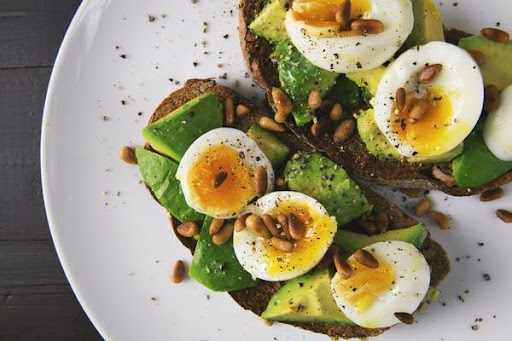Amino acids are combined molecules that form proteins. Twenty different amino acids are required by the body to keep it healthy and for it to function normally. Humans must ensure that we get 9 of these amino acids.
Aside from making our body function properly, it is also needed during exercise. The benefits of amino acids during exercise include improved workout performance, accelerated muscle growth, and accelerated recuperation.
You must get enough amino acids to support your workout routine. If you aren’t sure, here are different ways to acquire amino acids to help your body function and reach your goals.Â
Table of Contents
Take BCAA Supplements
The first thing you can do to get the right amount of amino acids to help you with your workout is to take BCAA Supplements. BCAAs can be taken before, during, and after a workout to increase blood amino acid levels, encourage protein synthesis, and stop muscle protein degradation.
You can also take supplements between meals if your diet does not deliver enough BCAAs. There are many options in the market, but you must remember that to achieve the desired result, you must choose the Best BCAA Supplements.Â
If you want to choose the right BCAA Supplement, don’t just pile on the leucine or go for a product with a high concentration compared to the other amino acids if you want to benefit from all that BCAAs have to offer.Â
Instead, seek a product that evenly distributes the three branched-chain amino acids in a 2:1:1 ratio.
Consume Lots of Eggs
Aside from taking supplements, food sources are another way to acquire amino acids. One food that is a great source of amino acids is eggs. All of the necessary amino acids are present in eggs, making them a superior protein source. According to studies, your body is more likely to use the amino acids from eggs than those from casein or soy.
Lysine, isoleucine, histidine, leucine, phenylalanine, methionine, valine, threonine, and tryptophan are all amino acids found in eggs. The egg is frequently used as a benchmark for other protein-rich foods because its sequence of amino acids closely matches the structure the human body requires.
Whole eggs, casein, whey protein, and soy protein isolate all receive a score of 1 on a 0 to 1 scale from the PDCAAS or Protein Digestibility Corrected Amino Acid Score. The AAS or Amino Acid Score grading system places whole eggs above all other protein sources examined with a score of 1.21which is more than what humans need.
Add Quinoa to Your Diet
Quinoa is considered a whole grain, even though it’s technically a seed. It is also known as a great source of fiber and plant protein. You can get around 5 grams of fiber and 8 grams of protein in one cup of prepared Quinoa.Â
This food is a complete protein, which means it has all nine essential amino acids that human systems cannot produce independently, in contrast to other plant proteins. Moreover, Quinoa is inherently gluten-free, so people with gluten intolerance conditions like celiac disease can eat it without risk.
Eat Legumes and Beans
Legumes are a fantastic source of high-quality protein, containing 20 to 45 percent of it and typically particularly high in the important amino acid lysine. With proteins ranging from 17 to 20% in beans and peas and 38 to 45% in soybeans and lupins, peas and beans are considered on the bottom end of the protein spectrum.
Except for peanuts, chickpeas, and soybeans, which have higher energy from fat content, legumes are typically low in fat and do not contain cholesterol.Â
They also include essential minerals and vitamins. Because they contain advantageous bioactive components, legumes have been given responsibilities in economy, culture, physiology, and medicine in addition to being superior in nutrition.
Log What You Consume
Lastly, to ensure that you are eating the right food and taking the proper supplement to get your needed amino acids, you should make it a habit to log what you consume.Â
For a minimum of one week, keep a daily journal detailing the kinds of meals and supplements you take and their protein level. The serving size is specified on the nutrition information label, which lists the protein content in grams in one serving.Â
Optimize the protein intake depending on your consumption compared to the suggested portion. Record the overall quantity of protein you consumed each day, compare the amount from complete vs. incomplete sources, and consider the kinds of meals that included the incomplete proteins.Â
You ingested all the necessary amino acids if you swallowed the advised amount of protein, whether from a range of incomplete or complete proteins.
Combine Food
The nine essential amino acids can be consumed by combining plant-based proteins by eating meals from groups with complementary amino acid profiles. Brown rice or some other whole grain combined with beans or veggies is a great combination that offers a complete protein and works well as a single dish.Â
Corn and sweet pepper or tomatoes make another tasty pairing. As per studies released in the April 2011 issue of “PLoS One,” Quinoa, wheat germ, tomatoes, and cauliflower are plant-based foods with an adequate amino acid profile. However, these foods must still be mixed with other plant protein sources to offer you all the essential amino acids.
In Conclusion
There are many ways you can do to ensure that you will get the right amount of amino acids that will assist your journey to a healthy body. Start following the tips above and be confident you get the necessary nutrients.
